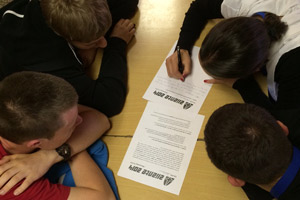Home1st round results & 2nd round questions
1st round results & 2nd round questions
I. History

- How was the Chicago Summit significant to the future of Unmanned Aerial Vehicle use by NATO?
- Describe NATO’s involvement in Libya in 2011? Which crisis management measures were applied and by which states?
- Analyze NATO –Turkey relations in the context of the Cuban missile crisis.
- Which Soviet doctrine was intended to justify interventions in satellite states (for example Czechoslovakia in 1968)? In what other cases was it applied?
- Why was the Iraq issue able to divide NATO members in 2003?
- In which operations has NATO enforced a no-fly zone or an arms embargo?
- Which NATO member country other than France did not participate in NATO’s integrated military structures for over a decade and why?
- What were the main points of the strategy of Mutually Assured Destruction during the 1960s and how has it evolved since?
- Describe the role and operation of Provincial Reconstruction Teams in Iraq. Why has this form of civil-military cooperation been specific to NATO?
- What obstacles forced NATO to get involved in Bosnia and Herzegovina only through a gradual increase of applied measures?
II. International Relations
- In what cases is the use of force by NATO justified by international law? Concentrate on the most discussed points.
- Compare NATO activities in combating piracy with those of the European Union.
- Explain the concept of cooperative security. How did it influence NATO after 1989?
- State which NATO and non-NATO countries are involved in combatting the organization ISIL in both Syria and Iraq and describe how they are involved.
- State examples of international treaties which objective was to decrease the number of nuclear weapons in world stockpiles?
- Define the term privatization of security and provide examples.
- What are the key security challenges to Afghanistan after the end of NATO's military operation?
- What is the "Responsibility to Protect"? What is its relation to international law and how does this concept practically influence NATO?
- Which countries immediately neighboring Russia have joined, or are on the path to join NATO? What were or are the main complications?
- What specific steps have been undertaken by NATO in response to the Ukraine crisis? Include both the adopted decisions and on-the-ground developments.
III. Structure and Functioning
- How can the Smart Defense concept of "pooling and sharing" function in reality? Are there existing examples? And what are the major related concerns?
- What remains the dominant obstacle of Macedonia joining NATO? Explain how its accession process developed.
- Is there a difference between the funding mechanism of NATO military operations and other activities (such as air defense, command and control, or HQ operation)?
- How is NATO involved in combating cyber-terrorism? Is the number of attacks against member countries rising steadily?
- When was the Article no. 5 of the Washington Treaty activated and why?
- Why was the NATO Strategic concept from 1999 so crucial to the development of the Alliance?
- Name, date, and provide a short description of NATO operations in the territory of former Yugoslavia.
- How has the NATO ballistic missile defense developed since 2002?
- State specific examples of NATO's cooperation with African international organizations since the end of the Cold War.
- What requirements must be met and which procedures undertaken by countries aspiring to gain NATO membership?
IV. Geography
- Highlight countries which are members of NATO but not members of the EU (as of March 1, 2015 and beside USA and Canada).
- Highlight European countries which host a permanent US military base.
- Highlight NATO member countries which were previously members of the Warsaw Pact.
- Highlight countries outside of NATO who are participating in the NATO Strategic Airlift Capability multinational project (as of March 1, 2015).
- Highlight NATO member countries which have not adopted sanctions against Russia over the ongoing Ukraine crisis (as of March 1, 2015).

























